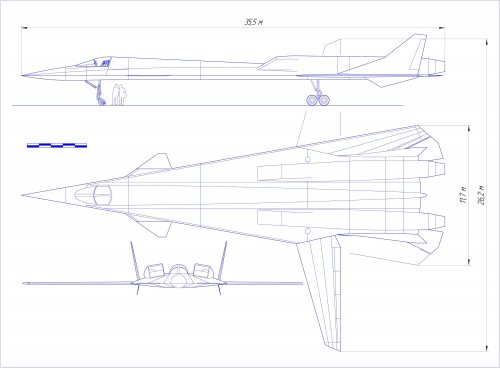May 10, 2014: Despite problems with recently refurbished MiG-31 fighters Russia is moving forward with yet another round of fixes and improvements. In particular the D30F6 engines will be tweaked and upgraded to make them more powerful, efficient and reliable. This comes in the aftermath of two crashes (in early and late 2013) that involved these engines. In December 2013 Russia grounded all 122 of its MiG-31 fighters after one of them crashed because both of its engines failed.
What was most disturbing about recently refurbished MiG-31s crashing was that Russia was in the midst of upgrading most of its MiG-31s to the new MiG-31BM standard. This is expected to take the rest of the decade to complete. The upgrade will include a new radar with a range of 320 kilometers and the ability to simultaneously track up to 10 targets. But without reliable engines it’s all for naught.
The original upgrades come just in time as the remaining MiG-31s were in bad shape. The MiG-31 is itself an upgrade of the MiG-25 design, which was developed to deal with the American B-70 bomber. When the United States cancelled the B-70 in 1967 the Russians kept going with the MiG-25 and turned it into a reconnaissance aircraft. The B-70 got axed because it was too expensive and it was realized that the future was in bombers that came in low and fast rather than high and even faster.
The MiG-25, on the other hand turned out to be an excellent recon aircraft. Able to fly higher and faster than other fighters used for recon although not as high as the American U-2 or SR-71. But the United States did not sell those aircraft to anyone, while Russia made a lot of money selling MiG-25s to anyone with enough cash. Russia also made a lot of money training the two man crews required for each exported MiG-25.
The MiG-31 fixed a long list of MiG-25 problems and was turned into a very impressive interceptor. The 46 ton aircraft has passive sensors (which have a range of 200 kilometers) and radar guided R33 missiles, with a range of 150 kilometers. Other missiles are carried, as well as smart bombs. The MiG-31 is not very maneuverable but it is fast (able to sprint at up to 3,200 kilometers an hour). Like the original MiG-25 it does not have much range (a 720 kilometer combat radius).
The MiG-31 appeared in the 1980s and the current version, the MiG-31M, is actually an accumulation of upgrades that have been under way since the Soviet Union collapsed in 1991. Since then, about 200 of the remaining 350 MiG-31s have been upgraded or are in line for the work. In the last few years, the MiG-31 fleet has gotten a lot more money and readiness (for combat) has gone from under 25 percent to over 75 percent. But only about 180 MiG-31s remain flyable and only 122 are actually in service. Russia is having a growing problem with obtaining sufficiently competent ground support personnel and civilian technicians that can handle upgrades and major maintenance.
About 500 MiG-31s were built in the 1980s and these aircraft remain the mainstay of Russian air defenses, at least as far as interceptors go. But the MiG-31 fleet is spread thin across Russia's vast borders and squadrons tend to be concentrated in areas where they might encounter high performance intruders (China and Europe). There are about a hundred MiG-31s in storage and these can be refurbished and upgraded if need be.
In early 2013 Russia revealed that about 16 percent of its MiG-31 interceptors were on alert at any time, ready to take off and confront aerial intruders. A larger number of the 240 Su-27s are on alert as well. The high-flying and extremely fast MiG-31s are able to catch just about any type of aircraft. The Su-27 comes along to back up the Mig-31s and protect them from any fighters. The MiG-31 is optimized for quick interception, not prolonged air combat.
In late 2013 the Russian Air Force moved a squadron of MiG-31 interceptors to the island of Novaya Zemlya. This place is 55,000 square kilometers of glaciers and tundra off the northern coast, in the Arctic Sea. It is cold up there, with the temperature above freezing (some of the time) only from mid-June to the end of September. There has been a military air base on the island since 1955, mainly to support the 224 nuclear tests (open air and underground) conducted in the area until 1975. The MiG-31 squadron joins a Su-27 squadron that has been up there since 1993. The place is a wilderness, with a total population of 2,400. Russia says it needs high performance interceptors up there to defend against bombers and cruise missiles from some NATO country or another.
Russia is covering 20,000 kilometers of land borders with fewer than 600 fighters. Worse yet, most of the Cold War era radars along the borders are elderly, unreliable and frequently off-line. The radar network is being rebuilt, but that will be taken care of more quickly than rebuilding the jet interceptor force. Actually, Russia will probably never have the Cold War size interceptor force (2,300 fighters) that existed in 1991. The only survivors of that are the MiG-31s and Su-27s.

